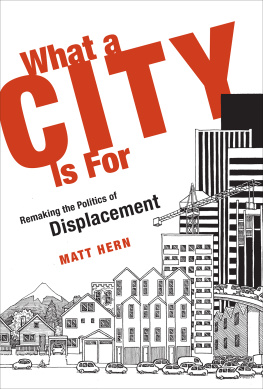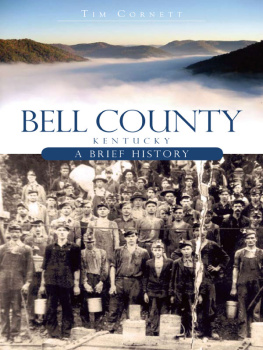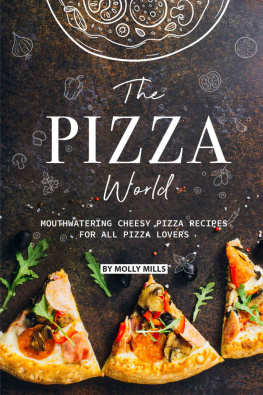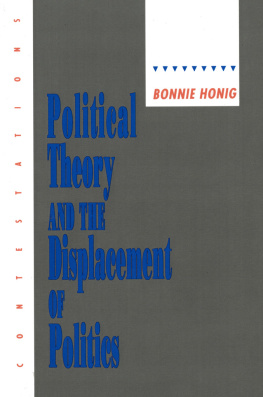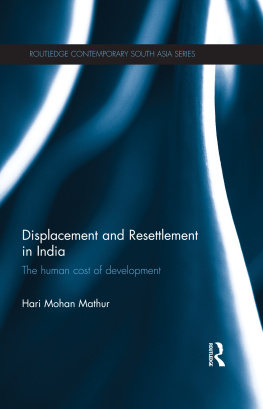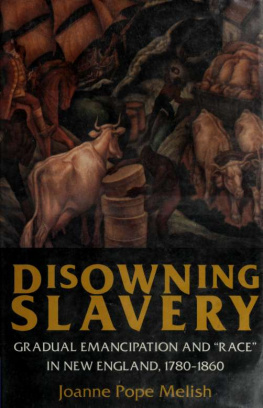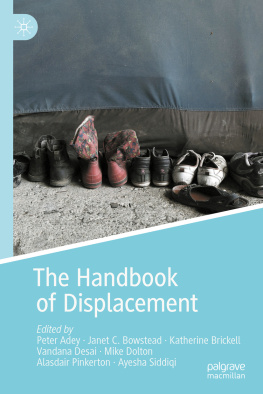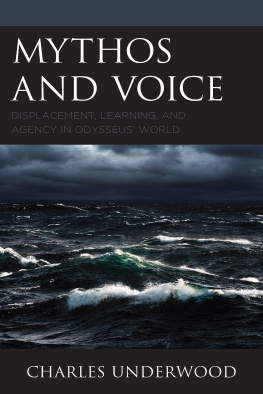Hern - What a city is for remaking the politics of displacement
Here you can read online Hern - What a city is for remaking the politics of displacement full text of the book (entire story) in english for free. Download pdf and epub, get meaning, cover and reviews about this ebook. City: Cambridge;Massachusetts London;England, year: 2016, publisher: MIT Press, genre: Politics. Description of the work, (preface) as well as reviews are available. Best literature library LitArk.com created for fans of good reading and offers a wide selection of genres:
Romance novel
Science fiction
Adventure
Detective
Science
History
Home and family
Prose
Art
Politics
Computer
Non-fiction
Religion
Business
Children
Humor
Choose a favorite category and find really read worthwhile books. Enjoy immersion in the world of imagination, feel the emotions of the characters or learn something new for yourself, make an fascinating discovery.
What a city is for remaking the politics of displacement: summary, description and annotation
We offer to read an annotation, description, summary or preface (depends on what the author of the book "What a city is for remaking the politics of displacement" wrote himself). If you haven't found the necessary information about the book — write in the comments, we will try to find it.
Hern: author's other books
Who wrote What a city is for remaking the politics of displacement? Find out the surname, the name of the author of the book and a list of all author's works by series.
What a city is for remaking the politics of displacement — read online for free the complete book (whole text) full work
Below is the text of the book, divided by pages. System saving the place of the last page read, allows you to conveniently read the book "What a city is for remaking the politics of displacement" online for free, without having to search again every time where you left off. Put a bookmark, and you can go to the page where you finished reading at any time.
Font size:
Interval:
Bookmark:

What a City Is For
Remaking the Politics of Displacement
Matt Hern
The MIT Press
Cambridge, Massachusetts
London, England
2016 Massachusetts Institute of Technology
All rights reserved. No part of this book may be reproduced in any form by any electronic or mechanical means (including photocopying, recording, or information storage and retrieval) without permission in writing from the publisher.
This book was set in Helvetica Neue and Chaparral by the MIT Press. Printed and bound in the United States of America.
Library of Congress Cataloging-in-Publication Data
Names: Hern, Matt, author.
Title: What a city is for : remaking the politics of displacement / Matt Hern.
Description: Cambridge, MA : MIT Press, [2016] | Includes index.
Identifiers: LCCN 2016000394 | ISBN 9780262034883 (hardcover : alk. paper)
Subjects: LCSH: UrbanizationSocial aspects. | Real estate
developmentSocial aspects. | GentrificationSocial aspects. | Community development. | Sociology, Urban. | Equality.
Classification: LCC HT361 .H47 2016 | DDC 307.76dc23 LC record available at http://lccn.loc.gov/2016000394
ePub Version 1.0
This book is dedicated to the memory of Joice Taylor, 19492016
Contents
I
II
III
Acknowledgments and Gratitude
Most of this book was written in Coast Salish Territories. I want to express my gratitude to the Musqueam (xmk m),
Squamish (S k w x w7mesh), Tsleil-Waututh (sliwta), and Sto:lo (St:l) nations for their generosity in hosting my family here on their unceded, occupied, and traditional territories.
The book wasnt written exclusively here though; major parts were also worked out in Sydney, NS (props to Burt and Irene), Montreal, Saskatoon, New Orleans (with gratitude to Liz Lichtman), Edmonton (thanks to the hospitality of the BWCC Cru and the exemplary care of Dawit, Seble, and family), Whitehorse (where Dan and Sarah could hardly provide a warmer place to stay), and of course 9724 Glynnwood (love to Joan, Adele, and Rileyrest well Popsas always for the loving care).
At its heart this is a book for and about Albina, and it is to that place that I owe deep gratitude. I was so startled when I first encountered the story of Northeast Portland that I just kept returning, over and over again over the course of several years. Joice Taylor, John Washington, Fawn Aberson, and everyone at NNEBA were my first contacts in the neighborhood, and through the years they have been so fun, generous, profane, brilliant, and kind to mein short, they have been great friends. This book would never have been written without them. Similarly, Lisa Bates, Walidah Imarisha, and Ibrahim Mubarak have been unbelievably generous with their time and energy and constantly patient with all my questions and emails. I hope they hear their voices in here.
There are also a good number of people whom I interviewed and spoke to at length in Portland, Vancouver, and elsewhere, and they all show up both explicitly and implicitly in the book: Lily Grewal, LaTonya Garrett, Terrence Feathers, John E. Davis, Izzy, Sharese McDaniels, Mike Lewis, Andy Yan, Avi Friedman, Bob Williams, Fiona Jackson and Michael Rodgers from the CHFBC, Skeeter Wright, Elvin Wyly, Nick Blomley, and Paul Knauls. My thanks to all of them for their kind attention, time, insights, and counsel. As well, the good folks at the MIT Press, especially Beth Clevenger and Kathleen Caruso, have been exceedingly gracious with me from beginning to end, and have contributed significantly to the books evolution.
Many other people have responded to parts of this book, in whole or in part, and have influenced it significantly, in so many ways. They include all kinds of students and audiences from all kinds of places who have generously considered and critiqued my ideas and pushed me toward clarity. But of course its always friends and family whose opinions I listen to most carefully. Sobhi and Tamam Al-Zobaidi, Chuck Morse, Khelsilum Rivers, Kanahus Manuel, Cecily Nicholson, Leanne Simpson, Richard Day, Erik Swyngedouw, Nathan McClintock, Geoff Mann, Mark Douglas, Mark Jacobs, Isaac Oommen, Josiane Anthony, Aklilu Mulat, Joe Sacco, and Am Johal have all offered significant readings, critiques, and challenges. This book would not have existed without their sagacity and friendship.
While writing a book about urban displacements, I have found it almost impossible to distance any part of the writing from my own experiences here in East Vancouver and Coast Salish Territories. Our lives here on the fifteen hundo block have been inseparable from my thoughts as I was writing: you know who you all are. Keith, Ashley, Shane, Skye, Diana, Sarah Lum, Mica, Dan, Sarah G., Jesse, Layla, Annah, Justin, Magnolia, Alejandro, Dorone, Sarah, Basma, and many, many more who have lived here with us over the yearsthis was written with you all in my heart and head, and of course none more so than Selena, Sadie, and Daisy.
Part I
1 Under All Is the Land
Im standing in the bright Oregon sunshine, blinking and squinting in the early afternoon glare. Its the northeast of Portland and Ive just strolled through an expectedly bucolic Portlandian community, wandering up and around Mississippi and North Williams Streets and then over along Alberta Street, amazed at the sheer number of bars, cafs, restaurants, and food trucks serving craft beer and local food. There seem to be a dozen cool-looking and tastefully hipsterized eating spots on every block, each of them attractive and distinctive, each branded smartly and each full of magazine-quality fare.
For a hungry visitor this is great news, and after Ive eaten too much I zigzag back though the neighborhood, walking off the food and admiring the scenery. The scale is classic Portland: low-density, low-rise, overwhelmingly single-family houses with a few four-story mixed-use developments here and there. The requisite bike lanes lace the community, the light rail is close by, and overall it is everything Portland urbanism has become famous for over the past few decades: sweet, walkable, neo-pastoral compact (or complete) neighborhoods that look and feel eminently livable, dully predictable, and very, very white.
But Im not here to eat or wander; Ive come to hang out with John Washington and Joice Taylor of North NorthEast Business Association (NNEBA), which essentially functions as a voice for the embattled and endangered African American businesses in the district. You see, the inner Northeast, in the neighborhoods around Martin Luther King Jr. Boulevard that most people call Albina, has historically been Portlands only clearly Black community, an area into which African Americans were pushed over the past century, then contained via exclusive zoning, predatory lending, racist containments, and disciplinary real estate practices.
In three distinct waves through the 1900s, Black people were aggressively funneled into Albina via official and unofficial consortiums of city officials, realtors, bankers, landlords, insurers, and appraisers. Black movement out of the neighborhood was severely restricted by a range of compulsions from physical violence to economic disincentives to legal restrictions on homeowners, while bankers and realtors enforced segregation fearing a destruction of value should Black people to start inhabiting other neighborhoods. In 1919 the Portland Realty Board declared it unethical to sell property in white neighborhoods to Black or Chinese people, and The City Club of Portlands 1957 report, The Negro in Portland: A Progress Report, 19451957, documented what was generally understood: 90% of realtors would not sell a home to a Negro in a White neighborhood. Thus, Black families had great difficulty leaving Albina and were made wholly unwelcome elsewhere in the city, all the while being denied tools to build where they were.
Font size:
Interval:
Bookmark:
Similar books «What a city is for remaking the politics of displacement»
Look at similar books to What a city is for remaking the politics of displacement. We have selected literature similar in name and meaning in the hope of providing readers with more options to find new, interesting, not yet read works.
Discussion, reviews of the book What a city is for remaking the politics of displacement and just readers' own opinions. Leave your comments, write what you think about the work, its meaning or the main characters. Specify what exactly you liked and what you didn't like, and why you think so.

